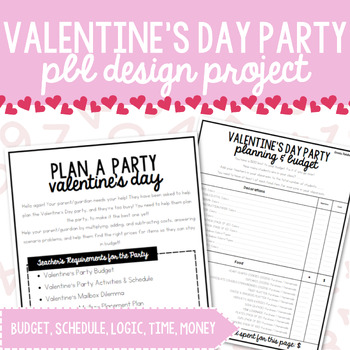Valentine's Day Party PBL Design Project: Budget, Schedule, Logic, Time, Money
- PDF
Description
Looking for a Valentine's Day Activity?
Need an Engaging Math or Problem-Solving Project with a Fun, Realistic Application?
This project leads students through the process of:
- Organizing a Valentine's party schedule based on requirements and limits
- Utilizing critical thinking skills to create a budget based on limits and free-choice options
- Representing Valentine's card mailboxes on their logic puzzle placement plan
- Creating activities, if the teacher's choice turns this activity into a legitimate plan for this year's party!
Assessing Students' Skills with Basic Multiplication/Division, Money Sense, Time, and Critical Thinking?
This project shows students' application of those skills in a realistic sense!
(At least, as realistic as it can get with an elementary student designing a Valentine's Day Party!)
*Just a heads up, this is a pdf file!
**Please rate & review this product! I appreciate your honest feedback, plus it helps me make improvements! For every $1 you spend = 1 TPT credit. This applies to every item you've purchased!
***Fill out this Google Form to request a new product, suggest edits to products, inquire about products, or report an issue with a product!
Included in this purchase:
- 1 pdf with activities, handouts, & answer key





